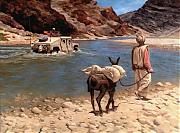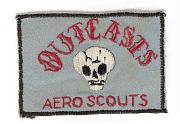Actually no fire from me, well not much anyways.At the risk of drawing ire and fire from you, UBoat, ODB and others, I have to point out that a conventional Infantry Battalion can be trained to do much -- not all -- of what SF can and would do in a COIN fight. Conversely, I do not believe SF can expand without significant loss of quality to do what a slew of those Infantry Battalions can do. I'd also ask while this grand COIN fight is going on, who would be working the missions that SF has that those Infantry Battalions cannot or should not be trained to do...I was the above guys for 14 years before I came SF (I know late transition). Which to this point is a good thing. (If you wanna no more PM me Ken) Yes many of the infantry battalions can do a lot of what we do. Big difference is the assets available. As you mentioned those specific things we legally can do that they can't. Welcome to loss in quality or should I say maturity and experience? But I'm sure that has been said many times over throughout the years.
100% on point here. As I've stated earlier if we stayed in our respective lanes a lot of things would be meshing better.Is that not a function of the facts that COIN IS the Operational level when and where implemented and, far more importantly and less arguably -- the fact that we doctrinally, educationally and training wise virtually ignored COIN and ID for almost 30 years?
Did not that neglect extend at least in part to SF who looked at, er, uh, other missions, while admittedly keeping a finger or two in the COIN / ID water?
Well said would like to add one thing to this. This integration or "cross pollination" needs to start in professional development and advance course levels as well. The learning process needs to start here, additionally I believe this would help SF and conventional forces understanding of each others capabilities and METL. What's your thoughts out there on this?All that said, there's a valid case for integration of SF Officers and NCOs on the staffs of COIN or ID involved units -- and vice versa...
Lastly, Ken I would love to pick your brain over a bottle of Kentucky bourbon sometime....








 ).
).


 "A Sherman can give you a very nice... edge."- Oddball,
"A Sherman can give you a very nice... edge."- Oddball, 


Bookmarks